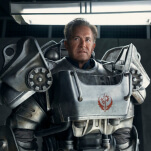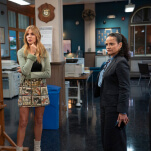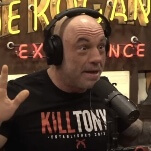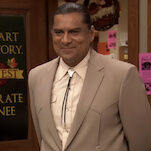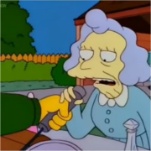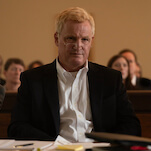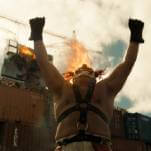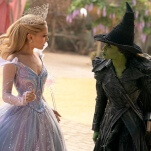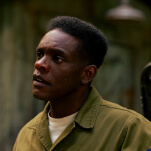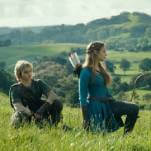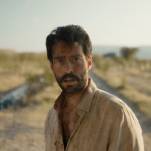While we’re big fans of Twin Peaks here at The A.V. Club, not everyone was sold on David Lynch and Mark Frost’s mind-bending magnum opus. Some say it was too abstract, others criticize its unresolved subplots, and others still thought it lacked the original’s “chutzpah” (which is legit insane, by the way). But maybe those criticisms sprang from the story’s format—Lynch described the show as “a feature film in 18 parts,” yet it aired in hourlong installments on a weekly basis. There was no other way to air it in our current entertainment landscape, but it was easy to forget an episode’s odder, more dreamlike moments during those breaks.
Writer Evan Davis consumed all 18 hours in one sitting, and wrote about his experience in a new essay for Decider that reveals how viewing the series in this manner not only brings clarity to the overarching narrative, but also to Lynch’s fractured, oft-frustrating structure.
“While each episode presents certain intrinsic norms with regard to narrative, theme, and character, those melt away when each episode is strung together,” Davis writes. “What emerges is a continuous narrative flow, where every disparate storyline seems to flow effortlessly together.”
That flow is indicative of Lynch’s desire to, in Davis’ words, “tell a never-ending story—to have narrative exist in a state of continuous unfolding, so that it might envelop everything the way that a constantly expanding universe might swallow negative space.”
He elaborates:
Finally, Lynch and Frost’s structural design brings these two narrative functions together by editing them next to, around, and through each other, so that each one carries equal weight. The comedy of Dougie Jones, and the suspense surrounding Cooper’s awakening, lives next to Ben and Beverly’s almost-tryst, which lives next to Shelly’s struggle to help the struggling Becky, which lives next to Cole, Albert, and Tammy Preston’s investigation into Briggs, Diane, and Cooper, which lives next to Cooper’s doppelganger’s quest to gain the coordinates that will take him to “Judy.” I wouldn’t argue that Steven Burnett’s suicide threat in the woods carries the same narrative or emotional weight as Cole’s Monica Bellucci dream, but Lynch’s editing implies that either could take pride of place in the story. This story never ends, and that means every character can step up and be important.
Watching the series one episode at a time deadens this remarkable effect. We aren’t given the opportunity to see as clearly how deftly the plot advances thanks to Lynch and Frost’s seeding strategy. We don’t feel the textural unity of all of these new characters, or the meandering stasis of some old ones. (Someone should write about the significance of Ed, Norma, Nadine, Jacoby, Bobby, Janey-E, and Sonny Jim being the only characters to get happy endings.) Only when we see the work in its entirety can its full power be brought to bear on our senses and emotions.
It’s easier to get lost in the bigger picture, in the actual world of Twin Peaks, when you’re not interrupted every hour, prompted to go stream the new episodes of Silicon Valley or Game Of Thrones that aired on the same nights as Peaks’ initial run. Like any Lynch experience, it’s meant to be watched straight through; there’s a reason he added no chapters to the DVD releases of Eraserhead and Mulholland Drive.
The difference, of course, is that 18 hours is an absurd chunk of time to commit to one viewing experience. But Twin Peaks fans, obsessive as they are, will no doubt be up for the challenge.



